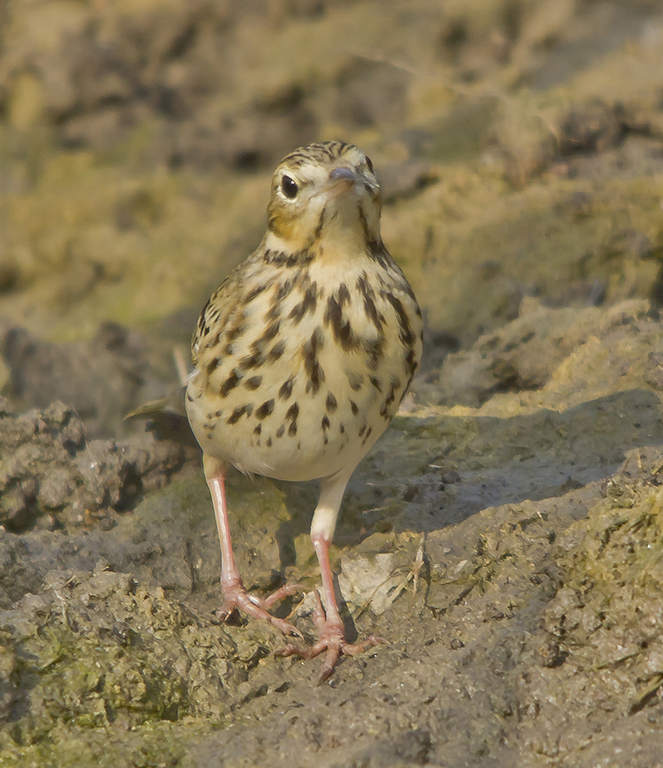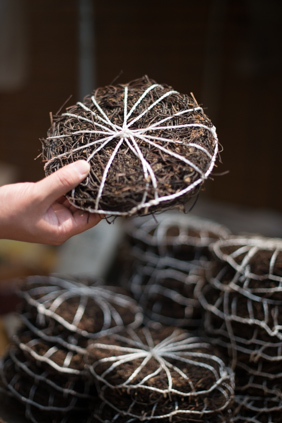|
Kelling Heath
Kelling Heath is an biological Site of Special Scientific Interest between Holt and Weybourne in Norfolk. It is in the Norfolk Coast Area of Outstanding Natural Beauty. Geology Kelling Heath lies on the Cromer Ridge, a glacial moraine formed by retreating glaciers at the end of the last Ice age. Together with nearby Salthouse Heath, it is one of two distinct outwash plains dating from different halt stages of the same glaciation. Kelling Heath provides perhaps the best example of a glacial outwash plain in England. Both sites have steep ice-contact slopes and are dissected by deep dry valleys, and are geomorphological sites of national importance. Natural history The heath is described by Natural England as 'a fine example of oceanic heathland'. The vegetation is typical of dry, acid heath and is dominated by heather, bell heather, western gorse, gorse and bracken, with areas of mixed woodland. A wide variety of heathland birds nest on the site, including nightjar, whitet ... [...More Info...] [...Related Items...] OR: [Wikipedia] [Google] [Baidu] |
Site Of Special Scientific Interest
A Site of Special Scientific Interest (SSSI) in Great Britain or an Area of Special Scientific Interest (ASSI) in the Isle of Man and Northern Ireland is a conservation designation denoting a protected area in the United Kingdom and Isle of Man. SSSI/ASSIs are the basic building block of site-based nature conservation legislation and most other legal nature/geological conservation designations in the United Kingdom are based upon them, including national nature reserves, Ramsar sites, Special Protection Areas, and Special Areas of Conservation. The acronym "SSSI" is often pronounced "triple-S I". Selection and conservation Sites notified for their biological interest are known as Biological SSSIs (or ASSIs), and those notified for geological or physiographic interest are Geological SSSIs (or ASSIs). Sites may be divided into management units, with some areas including units that are noted for both biological and geological interest. Biological Biological SSSI/ASSIs may ... [...More Info...] [...Related Items...] OR: [Wikipedia] [Google] [Baidu] |
Erica Cinerea
''Erica cinerea'', the bell heather, is a species of flowering plant in the heath family Ericaceae, native to western and central Europe. The plant provides a great deal of nectar for pollinators. It was rated in the top 5 for most nectar production (nectar per unit cover per year) in a UK plants survey conducted by the AgriLand project which is supported by the UK Insect Pollinators Initiative. Description It is a low, spreading shrub growing to tall, with fine needle-like leaves long arranged in whorls of three. The flowers are bell-shaped, purple (rarely white), long, produced in mid- to late summer. The flowers are dry, similar in texture to the strawflower. The Latin specific epithet ''cinerea'' means "ash coloured". Distribution ''Erica cinerea'' is native to the west of Europe, where it is most abundant in Britain and Ireland, France, northern Spain and southern Norway. It also occurs in the Faroe Islands, Belgium, Germany, north-western Italy, and the Netherlands. ... [...More Info...] [...Related Items...] OR: [Wikipedia] [Google] [Baidu] |
Villages In Norfolk
A village is a clustered human settlement or community, larger than a hamlet but smaller than a town (although the word is often used to describe both hamlets and smaller towns), with a population typically ranging from a few hundred to a few thousand. Though villages are often located in rural areas, the term urban village is also applied to certain urban neighborhoods. Villages are normally permanent, with fixed dwellings; however, transient villages can occur. Further, the dwellings of a village are fairly close to one another, not scattered broadly over the landscape, as a dispersed settlement. In the past, villages were a usual form of community for societies that practice subsistence agriculture, and also for some non-agricultural societies. In Great Britain, a hamlet earned the right to be called a village when it built a church. [...More Info...] [...Related Items...] OR: [Wikipedia] [Google] [Baidu] |
Sites Of Special Scientific Interest In Norfolk
Site most often refers to: * Archaeological site * Campsite, a place used for overnight stay in an outdoor area * Construction site * Location, a point or an area on the Earth's surface or elsewhere * Website, a set of related web pages, typically with a common domain name It may also refer to: * Site, a National Register of Historic Places property type * SITE (originally known as ''Sculpture in the Environment''), an American architecture and design firm * Site (mathematics), a category C together with a Grothendieck topology on C * ''The Site'', a 1990s TV series that aired on MSNBC * SITE Intelligence Group, a for-profit organization tracking jihadist and white supremacist organizations * SITE Institute, a terrorism-tracking organization, precursor to the SITE Intelligence Group * Sindh Industrial and Trading Estate, a company in Sindh, Pakistan * SITE Centers, American commercial real estate company * SITE Town, a densely populated town in Karachi, Pakistan * S.I.T.E Indust ... [...More Info...] [...Related Items...] OR: [Wikipedia] [Google] [Baidu] |
Kelling Heath Halt Railway Station
Kelling Heath Park is a small halt on the North Norfolk Railway (NNR), used mostly by hikers using Kelling Heath. It was opened after the line was preserved. The station was opened in 1983 as part of the NNR's extension to Kelling; a very short half coach-length halt was constructed principally to serve the nearby caravan park. Upon the completion of the extension to Holt Holt or holte may refer to: Natural world *Holt (den), an otter den * Holt, an area of woodland Places Australia * Holt, Australian Capital Territory * Division of Holt, an electoral district in the Australian House of Representatives in Vic ... in 1989, Kelling Camp Halt was demolished and a new longer platform was constructed ¼ of a mile further up the hill to the west; the station was also renamed "Kelling Heath Park". In March 1998, a new down distant signal was brought into use at the eastern end of Kelling Cutting. References Heritage railway stations in Norfolk Railway stations i ... [...More Info...] [...Related Items...] OR: [Wikipedia] [Google] [Baidu] |
North Norfolk Railway
The North Norfolk Railway (NNR) – also known as the "Poppy Line" – is a heritage steam railway in Norfolk, England, running between the towns of Sheringham and Holt. The North Norfolk Railway is owned and operated as a public limited company, originally called Central Norfolk Enterprises Limited. The railway is listed as exempt from the UK Railways (Interoperability) Regulations 2000. History Route history The line once formed part of the Midland and Great Northern Joint Railway's Melton Constable to Cromer Beach branch line. The first section, from Melton to Holt, was opened on 1 October 1884. After a suspension of work, the Holt to Cromer section of line was completed by direct labour, and opened on 16 June 1887. A through Kings Cross to Cromer express started running in August 1887, and although the construction had been expensive, the boost to revenue from the new line was considerable. A second train was put on the following year, in the down direction cons ... [...More Info...] [...Related Items...] OR: [Wikipedia] [Google] [Baidu] |
Viperidae
The Viperidae (vipers) are a family of snakes found in most parts of the world, except for Antarctica, Australia, Hawaii, Madagascar, and various other isolated islands. They are venomous and have long (relative to non-vipers), hinged fangs that permit deep penetration and injection of their venom. Four subfamilies are currently recognized. They are also known as viperids. The name "viper" is derived from the Latin word ''vipera'', -''ae'', also meaning viper, possibly from ''vivus'' ("living") and ''parere'' ("to beget"), referring to the trait viviparity (giving live birth) common in vipers like most of the species of Boidae. Description All viperids have a pair of relatively long solenoglyphous (hollow) fangs that are used to inject venom from glands located towards the rear of the upper jaws, just behind the eyes. Each of the two fangs is at the front of the mouth on a short maxillary bone that can rotate back and forth. When not in use, the fangs fold back against the ro ... [...More Info...] [...Related Items...] OR: [Wikipedia] [Google] [Baidu] |
Viviparous Lizard
The viviparous lizard, or common lizard, (''Zootoca vivipara'', formerly ''Lacerta vivipara''), is a Eurasian lizard. It lives farther north than any other species of non-marine reptile, and is named for the fact that it is viviparous, meaning it not only lays eggs, but also gives birth to live young. Both "''Zootoca''" and "''vivipara''" mean "live birth," in Greek and Latin respectively. It was called ''Lacerta vivipara'' until the genus ''Lacerta'' was split into nine genera in 2007 by Arnold, Arribas & Carranza. Male and female ''Zootoca vivipara'' are equally likely to contract blood parasites. Additionally, larger males have been shown to reproduce more times in a given reproductive season than smaller ones. The lizard is also unique as it is exclusively carnivorous, eating only flies, spiders, and insects. Studies show that the more carnivorous an individual is (the more insects they eat), the less diverse the population of parasitic helminths that infest the lizards. ... [...More Info...] [...Related Items...] OR: [Wikipedia] [Google] [Baidu] |
Tree Pipit
The tree pipit (''Anthus trivialis'') is a small passerine bird which breeds across most of Europe and the Palearctic as far East as the East Siberian Mountains. It is a long-distance migrant moving in winter to Africa and southern Asia. The scientific name is from Latin: ''anthus'' is the name for a small bird of grasslands, and the specific '' trivialis'' means "common". Taxonomy The tree pipit was formally described by the Swedish naturalist Carl Linnaeus in 1758 in the tenth edition of his ''Systema Naturae'' under the binomial name ''Alauda trivialis''. Linnaeus noted that the species occurred in Sweden. The specific epithet ''trivialis'' is Latin meaning "common" or "ordinary" from Latin ''trivium'' meaning "public street". The tree pipit is now placed in the genus ''Anthus'' that was introduced in 1805 by the German naturalist Johann Matthäus Bechstein. Two subspecies are recognised: * ''A. t. trivialis'' (Linnaeus, 1758) – breeds across Europe to southwest Siberia, ... [...More Info...] [...Related Items...] OR: [Wikipedia] [Google] [Baidu] |
Common Whitethroat
The common whitethroat or greater whitethroat (''Curruca communis'') is a common and widespread typical warbler which breeds throughout Europe and across much of temperate western Asia. This small passerine bird is strongly migratory, and winters in tropical Africa, Arabia, and Pakistan. Taxonomy The English ornithologist John Latham described the common whitethroat in 1783 in his ''A General Synopsis of Birds'' but introduced the binomial name ''Sylvia communis'' in the supplement to this work which was published in 1787. The specific ''communis'' is Latin for "common". The common whitethroat is now placed in the genus ''Curruca'' that was introduced by the German naturalist Johann Matthäus Bechstein in 1802. This species may appear to be closely related to the lesser whitethroat, the species having evolved only during the end of the last ice age similar to the willow warbler and chiffchaffs. However, researchers found the presence of a white throat is an unreliable morpho ... [...More Info...] [...Related Items...] OR: [Wikipedia] [Google] [Baidu] |
Nightjar
Nightjars are medium-sized nocturnal or crepuscular birds in the family Caprimulgidae and order Caprimulgiformes, characterised by long wings, short legs, and very short bills. They are sometimes called goatsuckers, due to the ancient folk tale that they sucked the milk from goats (the Latin for goatsucker is ''caprimulgus''), or bugeaters, their primary source of food being insects. Some New World species are called nighthawks. The English word "nightjar" originally referred to the European nightjar. Nightjars are found all around the world, with the exception of Antarctica and certain island groups such as the Seychelles. They can be found in a variety of habitats, most commonly the open country with some vegetation. They usually nest on the ground, with a habit of resting and roosting on roads. The subfamilies of nightjars have similar characteristics, including small feet, of little use for walking, and long, pointed wings. Typical nightjars, though, have rictal bristles ... [...More Info...] [...Related Items...] OR: [Wikipedia] [Google] [Baidu] |
Bracken
Bracken (''Pteridium'') is a genus of large, coarse ferns in the family Dennstaedtiaceae. Ferns (Pteridophyta) are vascular plants that have alternating generations, large plants that produce spores and small plants that produce sex cells (eggs and sperm). Brackens are noted for their large, highly divided leaves. They are found on all continents except Antarctica and in all environments except deserts, though their typical habitat is moorland. The genus probably has the widest distribution of any fern in the world. The word ''bracken'' is of Old Norse origin, related to Swedish ''bräken'' and Danish ''bregne'', both meaning fern. In the past, the genus was commonly treated as having only one species, ''Pteridium aquilinum'', but the recent trend is to subdivide it into about ten species. Like other ferns, brackens do not have seeds or fruits, but the immature fronds, known as ''fiddleheads'', are sometimes eaten, although some are thought to be carcinogenic. Description an ... [...More Info...] [...Related Items...] OR: [Wikipedia] [Google] [Baidu] |





_in_the_Aamsveen%2C_The_Netherlands.jpg)

.jpg)
